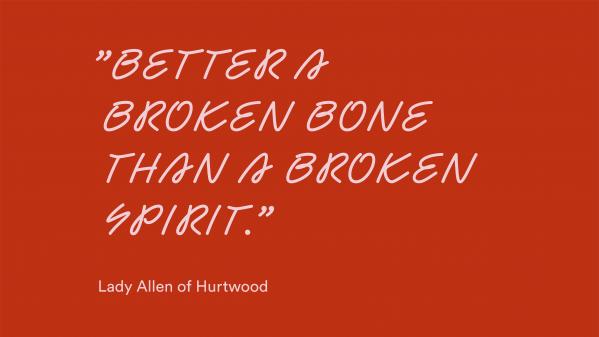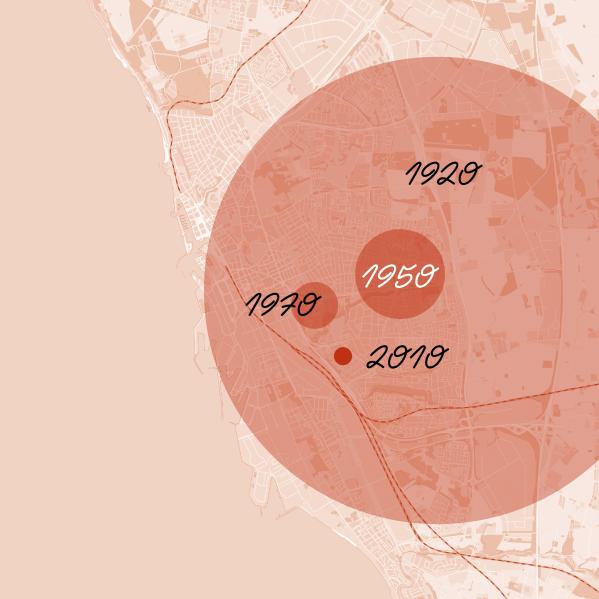Play restrictions

Play should be challenging!
Children must be given the chance to develop their judgment and their sense of what their own body is capable of. They do this through play with reasonably large challenges. For the small child, it can be like climbing up a rock. The slightly older child tries how high he dares to climb a tree. But the opportunities for such challenges have increasingly disappeared and been replaced by designed play equipment. Children who grow up in an urban environment, therefore, miss out on important learning and knowledge. We live in a society that is increasingly characterized by the pursuit of maximum security. It is as if we can no longer accept that childhood is fraught with important experiences that can also involve abrasions and the occasional sprained foot.
During the 1990s, a European standard was developed to prevent serious accidents related to play equipment and playground design. The recommendation was based on a compilation of accidents and has since become part of Swedish standards. The purpose of having a standard was to have a common measure to facilitate trade in play equipment in Europe. Gradually, these standards have been given the status of governing documents by municipalities and property owners. With the standard as a basis, the safety of playgrounds and play equipment is now inspected.
Self-built and designed play environments often fail in safety inspections. It can be a defect in the shock-absorbing surface or the distance between play equipment. Fear and uncertainty about who is responsible for any damage and accidents on a playground caused many property owners to back down. The consequence may be that play equipment and play areas are removed. With this standard as a basis, municipalities are offered to insure against the deductible in the event of a conviction – this even though no legal cases have occurred where the property owner has been liable for damages. Someone benefits from the fact that play is considered dangerous. Concerns among parents, educators and property owners develop certified play products and new professionals who control safety.
Really dangerous places, play equipment or risky situations must of course be remedied so that children are not harmed. Getting caught with a cord from the jacket in a broken slide can have fatal consequences and is not something the child can foresee. Other risks, however, are obvious – if you climb high you can fall, every kid understands that, and adapt the game accordingly.
For the child, playing is not about safety at all. Play, on the other hand, presupposes security and is driven by desire, curiosity, stimulation, imagination and joy. Sometimes the term play value is used when talking about how playful an environment is. If there is no play value in the playgrounds and play environments that adults create for children's play – well then it's wasted money. Play environments need to be interesting, possible to change and influence and be challenging. If the play environment is not stimulating, the children simply go elsewhere and play!
Bubblewrap-children and helicopter-parents are new words that describe children who are protected from everything and parents who anxiously check that the child is not exposed to any danger. Worrying is human and natural but must not be exaggerated. When parents who let their children play unattended feel afraid of being considered careless, and educators at school worry about being brought before a court, something has gone awry. Then the anxiety goes beyond the child's development and makes it difficult for them to grow into an independent and judgmental person.
Maybe our concern should instead be that children who grow up in cities today miss the chance to develop their physique, body awareness, their self-confidence and judgment? Herewith some dangers, Ronja Rövardotter shouted before she finally challenged the Hell Gap and in triumph dared to jump, with a mixture of excitement and horror-mixed delight.
Children and young people's decreased freedom of movement
The opportunities for children and young people to move freely have diminished dramatically in the last century. Tim Gill, author, lecturer and child rights activist in England, has described the development through his own family in Sheffield. In the 1920s, as an eight-year-old, his father got to walk all over Sheffield alone, almost a mile, to fish in the river. At the same age in the 1950s, Tim Gill got to walk 1.5 kilometres into the woods and play without adult company. As an eight-year-old in the 1970s, his daughter got to walk eight hundred meters on her own to the swimming pool. His grandson, who was eight years old in the 2010s, is only allowed to walk to the end of the street, about three hundred meters.
This development is widespread throughout the western world and is largely due to the increasing car traffic, lack of safe walking and cycling routes and parents' perceived concerns. The physical activity that everyday life provided just a few generations ago is not taken for granted by children today. The lack of interesting places to play also contributes to children and young people choosing to stay indoors. The less freedom of movement children have and receive, the more important it is that they have access to a good and stimulating environment close to home, school and preschool.

The map shows Tim Gill's analysis applied at Helsingborg.
Play and risk
All children should have safe opportunities to seek excitement and challenge in the play. It is an important part of every human being's development. By playing and trying what the body can do, the child acquires vital knowledge and good judgment. A good outdoor environment, therefore, invites children to run, climb, crawl and slide. Children describe how they get a tingling sensation in the stomach when, with a mixture of horror and delight, they accept physical challenges and test their courage in their relationships with adults and friends.
Research shows that preschool children need to:
Explore heights (climb, cling, jump, balance)
Experience high speed (running, swinging, sliding, cycling, skating)
Explore their limits of what is dangerous (climbing walls, fire, ice, water)
Test common tools (carving, chopping, sawing)
Struggle (compete, fight, wrestle)
Try to be alone (hide, withdraw)